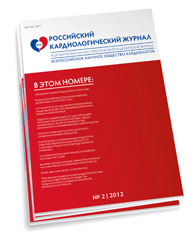New ESC Guidelines on pulmonary embolism
ESC Guidelines on the management of patients with pulmonary embolism (PE) have been released during this congress and provide clinicians with a user-friendly summary of current evidence in the field. There are essentially three important changes in their clinical recommendations.
First, they strengthen the case for risk stratification in the selection of a patient-centered treatment strategy, and are much clearer about who the intermediate-risk PE patients are.
Second, the guideline committee evaluated outcome data from several recent trials and provided recommendations on the use of thrombolytics in normotensive PE patients.
A third change, which is also very important, reflects the great number of studies with new oral anticoagulants from the past few years. As a result, the guidelines include an expanded section on these drugs in both the acute and long-term settings
PE is associated with significant morbidity and mortality. As many as 15% of all patients suffering PE die within the first month, and of those who do survive, 30% will develop recurrence over the following ten years. Furthermore, incomplete resolution of PE may lead to the development of chronic thromboembolic pulmonary hypertension, with an estimated prevalence of 0.1-4.0% after two years.
Current guidelines emphasise the importance of early risk stratification in the prognostic heterogeneous group of normotensive patients with acute PE. In these patients, prognostic information appears valuable for guiding management decisions - such as close monitoring and the administration of thrombolytic therapy or the performance of other recanalisation procedures. Moreover, accurate and objective models of prognosis could help clinicians to determine the suitability of early hospital discharge or complete ambulatory treatment of selected patients with PE and a low clinical risk.
The new guidelines have updated the classification of PE severity and now take into consideration both the PE-related risk and the patient’s clinical status and co-morbidity. Furthermore, the authors have included for the first time recommended risk-adjusted therapeutic strategies on the basis of this classification.
For intermediate-risk PE patients, the new guidelines do not routinely recommend systemic thrombolysis as primary treatment. The data from recent trials show the relative safety of withholding fibrinolysis unless hemodynamic decompensation occurs. Therefore, it may be that overall risk can be minimised with a strategy of initial anticoagulation and rescue fibrinolysis for hemodynamic decompensation.
The guidelines have revised the multiple therapeutic modes that exist for both the acute and long-term management of patients with PE. Development of new oral anticoagulants simplifies the acute-phase treatment of most cases, and now two oral agents can be used as monotherapy, avoiding the need for low-molecular-weight heparin. According to the new guidelines, selected patients with PE can be treated in the acute phase as outpatients, a decision dependent on prognosis and severity of PE.
In general, PE patients require three months of treatment with anticoagulants, with options including LMWH, vitamin K antagonists, or direct oral factor Xa or factor IIa inhibitors. Thereafter, decisions for further treatment are based on balancing the risk of recurrence, determined by etiology of the PE (transient risk factors, unprovoked or cancer associated), against the risk of major haemorrhage from treatment. Experience with new oral anticoagulants as acute, long-term, and extended therapy options is limited as yet, but as a class they appear to be safe and effective for all phases of treatment.
The guidelines attempt to define practices that meet the needs of most patients in most circumstances. The ultimate judgment about a particular patient must be made by the clinician and patient in light of all the circumstances.
Source: www.escardio.org






